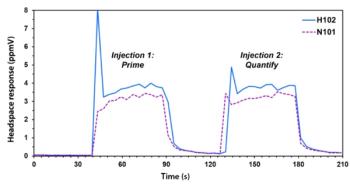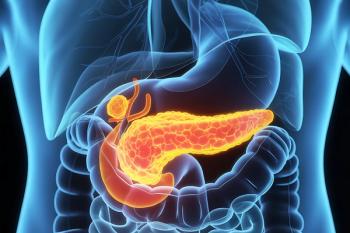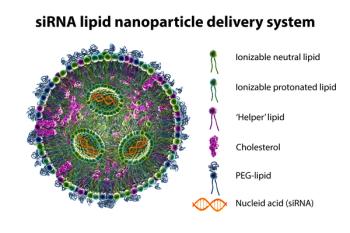
- The Column-09-10-2019
- Volume 15
- Issue 9
New LC–MS Detection Method for Short Peptides
Researchers from the University of Rome have developed a strategy for the identification of underivatized short peptides in urine using graphitized carbon black (GCB) solid-phase extraction (SPE) and liquid chromatography–mass spectrometry (LC–MS).
Researchers from the University of Rome have developed a strategy for the identification of underivatized short peptides in urine using graphitized carbon black (GCB) solid-phase extraction (SPE) and liquid chromatography–mass spectrometry (LC–MS) (1).
From biomarkers to bioactives, short peptide sequences have emerged as analytes of interest across a variety of different research fields with possibilities in the food traceability field coinciding with potential as disease biomarkers. Healthâpromoting bioactivities, such as antioxidant, antihypertensive, and antimicrobial properties (2–5), also continue to show promise.
Despite this potential, short peptides are under-investigated because of the challenges surrounding direct analysis, including the low abundance of peptides compared to other molecules, which can cause extensive ion suppression during electrospray ionization (ESI) (6). Extensive clean-up protocols can circumnavigate some of these issues, however, the nature of short peptides complicates sample cleanup dramatically. Further issues exist when attempting to use high-resolution mass spectrometry (HRMS) or tandem mass spectrometry (MS/MS) for identification as most software developed for proteomics cannot identify sequences shorter than five amino acids (7), with metabolomic databases currently being insufficient.
To address this lack of investigation, researchers developed a strategy for the identification of short peptides in urine, a commonly studied biofluid. Separation was achieved through ultrahigh-performance liquid chromatography (UHPLC), both reversed-phase and hydrophilic interaction chromatography (HILIC) with HRMS. An enrichment strategy utilizing GCB SPE was used to isolate and clean up the short peptides from the complex urine matrix.
Overall 101 peptides were identified from the reversed-phase runs and 111 peptides from the HILIC investigations, with 60 common identifications. According to the researchers, these positive results indicate that the method could be used to address the shortfall in short peptide research, but further work is still required to increase the method’s ease and move towards automation. Additionally, it is believed the GCB enrichment procedure could be utilized for alternative biofluids such as plasma.
References
- S. Piovesana et al., Anal. Chem. (2019) https://doi.org/10.1021/acs.analchem.9b03034
- K. Sato, J. Agric. Food Chem.66(12), 3082–3085 (2018).
- S. Piovesana et al., J. Proteomics 111, 21–29 (2015).
- R. Zenezini Chiozzi et al., Anal. Bioanal. Chem.408(20), 5657–5666 (2016).
- S. Piovesana et al., Anal. Bioanal. Chem.410(15), 3425–3244 (2018).
- A. Di Meo et al., Oncotarget7(32), 52460–52474 (2016).
- V. Koskinen et al., Mol. Cell. Proteomics10(6), (2011).
Articles in this issue
over 6 years ago
The Challenges of Climate Change for Wine Productionover 6 years ago
ChromSoc Return to “Grass Roots” with Biopharmaceutical Eventover 6 years ago
First Analytica Lab Africa Held in South Africaover 6 years ago
Vol 15 No 9 The Column September 2019 North American PDFover 6 years ago
Vol 15 No 9 The Column September 2019 Europe & Asia PDFNewsletter
Join the global community of analytical scientists who trust LCGC for insights on the latest techniques, trends, and expert solutions in chromatography.





